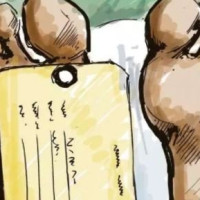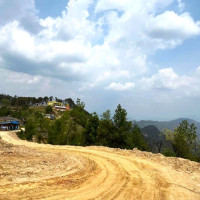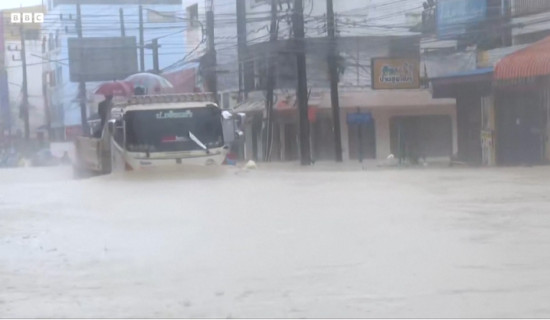- Wednesday, 26 November 2025
Gorkhapatra: Bridging Past And Present
The visit of Jang Bahadur Rana (1817-1877) to Europe, particularly Britain and France, in 1850 resulted mainly in four developments in Nepal's political and public life. First, he decided to make Nepal's foreign policy pro-British. It was his conviction that Nepal should help the British Raj to quell the 1857 mutiny in India, and he led the Nepali army to Lucknow and helped the Raj to suppress it.
As a result of his military assistance, he persuaded the grateful British to return a part of the land Nepal had lost in the Sugauli Treaty of 1816. Then, the land Nepal got back in 1860 began to be called naya muluk. Secondly, he promulgated the first written civil code in 1854. He had probably learnt that, unlike in Nepal until then, there were written laws in Britain and France that the governments used as uniform handbooks to rule and maintain law and order. Thirdly, he opened a school the same year (1854), although it was only for his children and kin. The school he started in his palace later became named Durbar (palace) school, which marked the beginning of the country's public education in the Western style. That is the first public school in Nepal. Fourthly, the printing press he brought into Nepal was like the embryo of the printing culture and eventually helped develop journalism in Nepal.
However, the first newspaper of Nepal, Gorkhapatra, was started by the Rana Prime Minister Dev Shumsher only on May 6, 1901, as a weekly newspaper published every Monday. Unlike the successors of Jung Bahadur, Dev Shumsher has been regarded as a liberal-minded reformist since he started this newspaper and opened many primary schools called Bhasha Pathshalas in several parts of the country. But he was quickly forced out by Chandra Shumsher, a cunning, ruthless despot. He discontinued this newspaper's publication and shut down the schools opened by Dev Shumsher. However, he opened a few schools named after him, including the first college of Nepal, Tri-Chandra College, in 1918. He also restarted the Gorkhapatra, spelled Gorakhapatra, in 1926.
The weekly Gorkhapatra was published twice a week (Mondays and Fridays) for almost 25 years (in 1926) and then three times a week (Mondays, Wednesdays, and Fridays) until 1960. Interestingly, the only newspaper published during the Rana regime was not published daily, even after the end of the Rana rule in 1951.
It wasn't until February 1961 that it became a daily newspaper. So, it is a moot question why it was not made daily, even during the decade-long experiment with democracy from 1951 to 1960 in Nepal. One can see that the growth of journalism, and that of the Gorkhapatra, was a very late and slow process compared to the situation even in British India, let alone Europe, particularly Britain.
Notwithstanding this painful reality, the Gorkhapatra was a forum for many important writers. Although Sharada, a purely literary magazine, was registered with the government office in March 1934, the Gorkhapatra also provided a forum for many writers to publish their poems and essays. For instance, Siddhicharan Shrestha (1912-1992) published his first poem, 'Earthquake Relief Organisation', in the Gorkhapatra in 1934.
It is also remarkable that the most celebrated playwright of Nepal, Balkrishna Sama (1903-1981), was the editor of the Gorkhapatra in 1956. Likewise, the national poet Madhav Ghimire (1919-2020) also worked as an associate editor of this paper for a short period. Intellectuals like Yadunath Khanal (1913-2004), Shiva Raj Acharya (1941-2017), Basudev Tripathi, and many writers of repute in Nepal published their articles in this paper. Thus, it provided a platform for all intellectual activities in art, music, literature, linguistics, politics, diplomacy, economy, and administration. Its Saturday supplement used to be, and still is, very rich, particularly in literature.
When the paper was crowded with contributions, it realised the need for special publications such as Madhuparka for essays and poems, Yuva Manch with materials targeted at the youth, and Muna for the children. Its sister publication complemented the Gorkhapatra, The Rising Nepal, in English, which was begun on December 16, 1965.
It is a matter of satisfaction that the Gorkhapatra is constantly improving its quality in terms of its content and physical form. It has a broad base of reporters in several parts of the country. It has also published materials in terms of news and analysis that may seem critical of the government regarding its performance or the lack thereof. Although it is published by a government-owned corporation and is supposed to be a mere mouthpiece of the government, it is laudable that it carries materials that expose its weaknesses, too. Objectivity in reporting and analysis is critical for the popularity of the newspaper.
The government authorities should tolerate creative and constructive criticism for their benefit. Such a culture of tolerance presents a positive picture of the government, as it also augments the popularity of the newspaper.
(Acharya is a former permanent representative to the United Nations.)
















